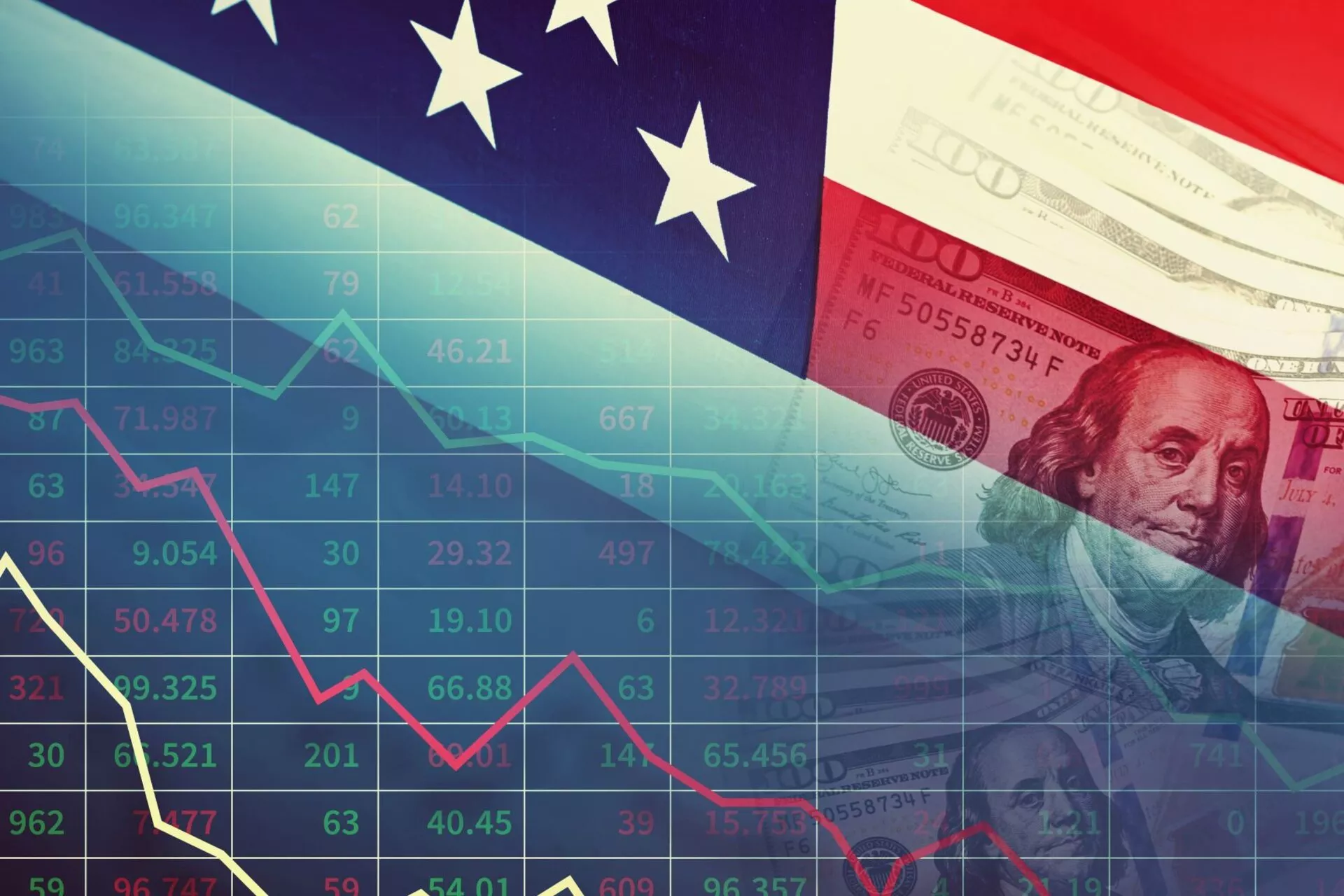
Weekly Update - The depreciation of the dollar as the image of the change in context
While markets have been characterized by high volatility in the first part of the year, the main trend that emerges is the depreciation of the dollar. Indeed, the dollar fell by an average of 9% against developed currencies and by 6% against emerging currencies. This depreciation is primarily a reflection of a smaller expected growth gap between the United States and the rest of the world and the renewed attractiveness of real interest rates in other countries. Secondly, this depreciation also reflects the various fears about US economic policies that have led investors to increase their financial allocation to other regions. These elements should keep the dollar weak and also lead us to maintain our Underweight position on the dollar, against the major currencies.
A particularly unfavourable Q1-25 for the dollar. One of the main financial trends of the first half of the year is the sharp depreciation of the dollar. This depreciation is even more striking as it has taken place during episodes of equity market volatility (post-Liberation Day) and rising geopolitical tensions (Israel-Iran war), episodes that are generally favourable to the US currency. Thus, the EUR/USD parity reached a level of 1.17 at the end of June against a parity of 1.04 on January 1st, i.e. an appreciation of 12%. The CHF, JPY and GBP also rose against the dollar by 14%, 9% and 8% respectively. However, the weakness of the dollar is also visible against the main emerging currencies, with the Mexican peso appreciating by 10% against the dollar while effective tariffs on Mexican imports have increased significantly. In the same line, the Chinese yuan also appreciated against the dollar by 2% in a context where the tariff rate on Chinese imports increased to 30%.
A rotation of macroeconomic factors behind macroeconomic depreciation. One of the reasons behind this sharp depreciation of the dollar is the growth dynamic between the United States and the rest of the world. If the strength of the dollar in 2024 reflected the strength of US growth relative to the rest of the world, growth in 2025 plays the opposite role. Indeed, the outlook for US activity has deteriorated since the beginning of the year, with growth close to 3% at the end of 2024 and 1.5% in 2025, in the context of US economic policy uncertainty. However, growth prospects in the rest of the other major economies have remained stable, while the euro area is expected to grow close to 1% in 2025 and gradually accelerate in 2026 as part of the recovery plans. A second factor that explains the depreciation of the dollar against developed currencies is the tightening of real interest rate spreads. Indeed, in the euro area, real Bund rates reached 0.9%, their highest level since 2013 in a context of sharper disinflation and increased supply of German securities (still AAA rated) which keeps long-term interest rates high. However, in the United States, real rates have remained broadly stable since the beginning of the year, at 2%. This reduction in real interest rate differentials has been favourable to the euro since the beginning of the year.
Some structural factors also work against the dollar. In addition to macroeconomic factors, the high uncertainties about the direction of US economic policy, particularly on the international side, are also contributing to the weakness of the dollar. Indeed, one of the Trump administration's objectives is to have a weaker dollar to reduce the trade deficit as well as to reduce the dollar's role as a reserve currency. As a result, investors are reportedly reducing their allocation of US assets in favour of other regions. Monthly capital flow data for April in the United States thus show a clear slowdown in inflows compared to the 2024 trend.
Other highlights of the week
In the major events of the week, we chose to mention the adoption of the budget by the American Congress, the American unemployment remaining at a low level, as well as the stabilizing trade balance and finally inflation in the Euro area.
United States: Congress adopts budget
The budget bill voted on July 3 extends significant reductions in household and corporate taxation implemented in 2017. On the spending side, the law specifically increases the defense and interior department budgets, while at the same time it provides for significant cuts in Medicaid, the public insurance system for Americans, as well as a reduction in tax credits decided under Biden in favor of renewable energy. The budget voted is expected to further deteriorate the public accounts, with a deficit expected to widen on average to 7% of GDP over the next few years according to the Congress Budgetary Office (CBO), and a debt that is expected to reach 115% of GDP in 2030
US unemployment remains at a low level
The labour market remains resilient. Indeed, the number of job creations in June amounted to 147 thousand positions, against 106 thousand expected by the consensus, and the unemployment rate decreased to 4.1% against 4.3% expected by the consensus. Incomes also remain on a good trajectory with growth of 3.7% year-on-year in June This good performance of the labor market would push the Fed to maintain its cautious bias while the risk of a stronger rise in inflation is still high.
Trade balance remains stable, effective tariff rate increases slightly
US imports in May remained at the same level as April, 15% lower than March, which was marked by frontloading. Importers therefore did not want to replenish stocks in view of the end of the suspension of tariffs scheduled for 9 July, thus showing moderate concern about an increased resumption of customs duties. At the same time, the average effective rate on US imports rose to 8.8% in May from 7% in April.
Eurozone: Inflation hits 2% target in June
In the euro zone, the June inflation rate stabilised in Germany (2%) and Italy (1.7%), and increased slightly in Spain (2.2%) and France (0.8%). Inflation in the euro zone as a whole rose by 2% year-on-year in June, exactly the ECB's target. Core inflation, excluding energy and food, remained stable at 2.3%. Most of the inflation was driven by services. In this context of inflation control, the European Central Bank met in a forum in Portugal. In particular, it has slightly modified its inflation target. Until now, the target was set at 2% with a preference for a level of inflation slightly below the target rather than above. It now takes a symmetrical view, with a tolerance when inflation is slightly above or slightly below its target, to avoid overreacting to temporary movements.





